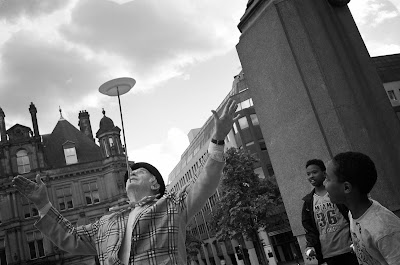
I've just bought a copy of
The Photographer -- a book I had never heard of, by a photographer I had also (shamefully) never heard of. Published by
Medecins Sans Frontieres/Doctors Without Borders, The Photographer combines the graphic novel with the photographs of French photojournalist
Didier Lefevre, who died aged just fifty in 2007. Lefevre photographed Afghanistan over the course of about twenty years, including the Soviet war.

The Photographer is a sort of photography book-cum-graphic novel. Once you see it -- and it isn't a small floppy comic book: it's as large and as well-printed as many photography books -- you'll wonder why no one thought of combining the two mediums before.
You can download a great press briefing about Lefevre, his fellow graphic artist Emmanuel Guibert, and the book that became a phenomenon
here. There's a 'Sunday book review' of The Photographer in the NY Times
here.
And it really is superb. If you're put off because you're not fanatically interested in photography, don't worry: it isn't really about photography. It's about human willpower and determination -- it's about journeys, it's about 'mending what others destroy', it's about.... Well, read it. That's the best advice. It certainly isn't quite what I expected. If you wonder what MSF expeditions in war zones entailed twenty-five years ago, then this will tell you. And if you want to know more about Afghanistan during the final years of the Soviet occupation, this will tell you. And if you want the shortest and most succinct history lesson about the twenty years that led up to the 11th September 2001 attacks, the brilliant little intro to this book will tell you.
In fact, for someone who has never before read a graphic 'novel' of any description, I can't recommend it highly enough.
And of course, in many respects the saddest and most touching thing is that this book is largely responsible for whatever public profile Lefevre now has as a photographer. He died in 2007 having only published one collection of photographs in his lifetime -- now out of print, of course -- and with the vast bulk of his work unknown.



















































